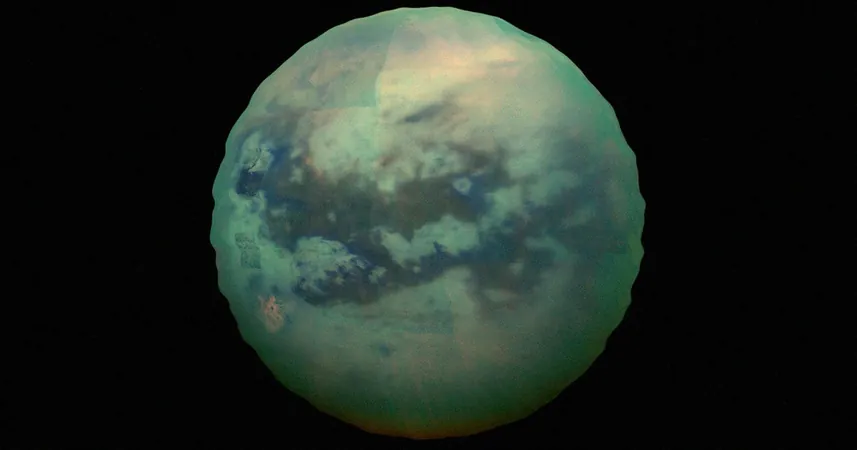
Titan's Unruly Atmosphere: Scientists Uncover Mysteries That Defy Logic!
2025-05-27
Author: Arjun
In a groundbreaking revelation, scientists have identified bizarre movements in the thick, hazy atmosphere of Titan, Saturn's largest moon. This discovery, highlighted in a recent publication in The Planetary Science Journal, is poised to challenge everything we know about atmospheric behavior.
For over 13 years, researchers have meticulously analyzed thermal infrared data gathered by the renowned Cassini-Huygens mission—a joint endeavor by NASA and the European Space Agency. Their findings are nothing short of astonishing: Titan's atmosphere wobbles like a gyroscope, shifting with the moon’s lengthy seasonal changes, which span nearly 30 years on Earth.
An Atmospheric Puzzle Unfolds!
Lead author of the study, Lucy Wright from the University of Bristol, shares her awe: "The behavior of Titan's atmospheric tilt is very strange. It seems to stabilize itself in space, acting independently from the moon's surface." This revelation adds yet another layer of intrigue to Titan, which already boasts liquid bodies and dimensions greater than those of Mercury.
However, with these new insights come more questions. Wright speculates that some historical event may have knocked Titan’s atmosphere off balance, resulting in this mysterious wobble. Even more perplexing is how the tilt's direction remains constant, seemingly untouched by external forces from the Sun or Saturn, leaving scientists scratching their heads.
Impacting Future Missions!
These findings could have significant implications for NASA's ambitious Dragonfly mission, which is scheduled to launch, at the earliest, in 2028. This mission aims to send a sophisticated rotorcraft to explore Titan’s dense atmosphere and surface, facing extreme cold at nearly -300°F and winds up to 20 times faster than Titan's rotation.
Understanding the atmospheric wobble may be crucial for ensuring Dragonfly’s success, guiding scientists on where to land and how to navigate the conditions.
Broadening Our Horizons!
Moreover, Titan’s enigmatic atmospheric behavior may force us to rethink our understanding of atmospheric dynamics not just on other celestial bodies, but also here on Earth. Conor Nixon, a coauthor from NASA Goddard, emphasizes, "Titan’s spinning top-like atmosphere raises fascinating questions for atmospheric physics globally, including our own planet."
While the prospect of discovering extraterrestrial life on Titan remains slim—thanks to the inhospitable rivers and lakes of liquid methane—a glimmer of hope lingers: scientists suggest that some glycine-consuming microbes might withstand Titan’s harsh conditions. Could this finally indicate life beyond Earth?
Stay Tuned For More Discoveries!
As the mystery of Titan continues to unravel, one thing is certain: our fascination with this remarkable moon is only beginning. With each revelation, we inch closer to understanding the complexities of our universe.


 Brasil (PT)
Brasil (PT)
 Canada (EN)
Canada (EN)
 Chile (ES)
Chile (ES)
 Česko (CS)
Česko (CS)
 대한민국 (KO)
대한민국 (KO)
 España (ES)
España (ES)
 France (FR)
France (FR)
 Hong Kong (EN)
Hong Kong (EN)
 Italia (IT)
Italia (IT)
 日本 (JA)
日本 (JA)
 Magyarország (HU)
Magyarország (HU)
 Norge (NO)
Norge (NO)
 Polska (PL)
Polska (PL)
 Schweiz (DE)
Schweiz (DE)
 Singapore (EN)
Singapore (EN)
 Sverige (SV)
Sverige (SV)
 Suomi (FI)
Suomi (FI)
 Türkiye (TR)
Türkiye (TR)
 الإمارات العربية المتحدة (AR)
الإمارات العربية المتحدة (AR)